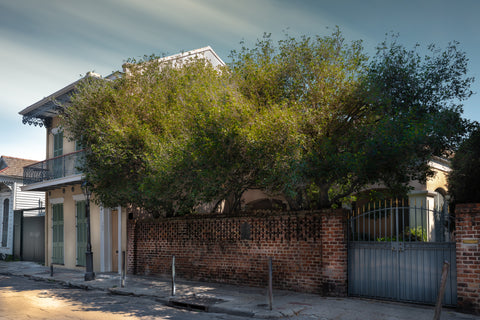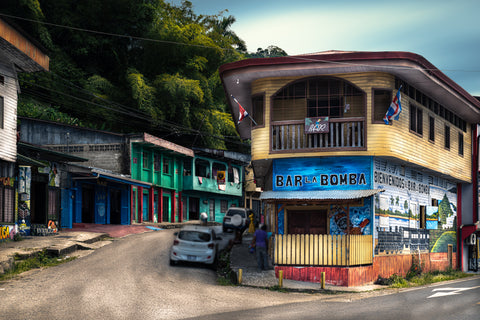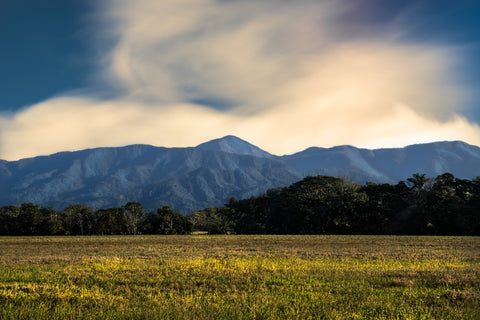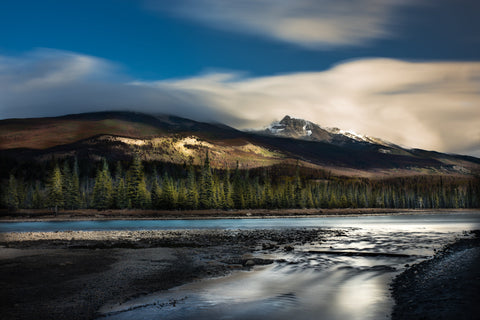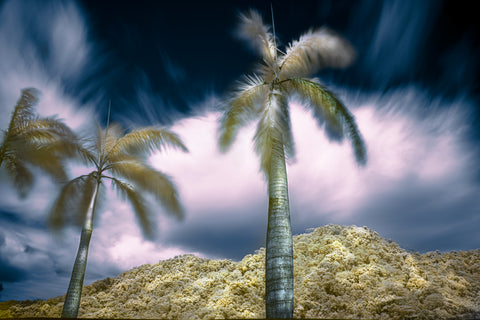Bill Hornbostel
721 Governor Nicholls Street
40 x 60 inches
Digital Photograph
Epson Lustre Giclée Print
edition of 6
Walking around New Orleans, one gets the sense that the city is a giant tide pool. High tides of prosperity periodically wash over the city, but when the tide goes out, what is left behind is the architecture of that prosperous time. The result is a mélange of different styles in much of the city.
In the oldest part of the city, the French Quarter, those styles range from French and Spanish colonial to Creole to antebellum American. The mish-mash of styles reflects how the city and Louisiana were passed between colonial powers before incorporated into the United States, and in the process developing its own unique local culture. Bordering the Quarter on the west is Canal Street, named for a canal that was never built; along its length are newer styles, such as art nouveau and art deco, culminating in the skyscrapers of the latter half of the twentieth century in the Central Business District. While the newer styles clash with the older, together they heighten the sense of the city as a tide pool.
One is also left with the sense of a sort of cheerful decay during one’s wanderings through the French Quarter. Old buildings sag out of right angles, brick façades crumble, paint peels from siding, and streets are poorly maintained, but new(ish) coats of paint, fresh pots of flowers and tropical plants, and barely concealed gardens bursting beyond their walls spread the happy colours of vibrant life around the Quarter.
With my images of New Orleans, I have used the style I first developed with images of the Scottish Highlands for an urban setting. Starting with the digital negative, I brush luminance into the images and play with contrast to bring out fine details. At the same time, I manipulate the images in such a way as to blur the line between photography and painting a little bit, a small homage to my original artistic training.

